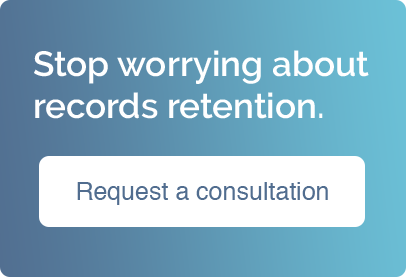All Your Business Needs To Know About Records Retention
Records retention schedules establish guidelines regarding how long important information must remain accessible for future use or references, as well as when and how the data can be destroyed when it’s no longer needed. To establish standardized document retention policy, you must figure out the records you need to retain, how long they would be needed, and how they will be stored and accessed.
Some records must be permanently retained, while some will be permanently destroyed. There are certain records that you may be required to retain by law or others that you might just want to keep to make it easier to do business. Regardless of the purpose of your records retention, your records retention policy must be understood and followed by everyone in your company.
A good decision must be made on how long you need to retain a document that is useful to your business. If you use a secure storage facility that specializes in records retention, you’ll need to create a complete inventory of your records storage. Records retention storage facilities also offer secure archive destruction services. A company is free to keep or dispose of any record it wants, whenever it wants to, other than regulatory requirements or litigation hold. A document retention program has the following benefits:
- Reduce storage costs
- Reduce regulatory costs and risk
- Mitigate risks from a data breach
- Improve speed/accuracy of record retrieval
However, you cannot create an effective record retention program by simply downloading schedules off the Internet; you need to customize your program to the particular needs of your company. For example, understanding the type of businesses your company, where the company operates, the types of technology used throughout the company, and the different regulatory environments it operates in, will all be part of creating a document retention policy. For creating a successful program, the IT department, legal department and the C-Suite must all work together. The IT group will be invaluable in terms of working with the records management team to know where electronic records are kept, how they are accessed, and how they can best be managed. The legal department help review the legal citations used in the retention schedule as well as communicating any legal holds currently active. The C-Suite must buy into the importance of having (and enforcing) a document retention policy..
The most crucial task in creating your program is to figure out what you have and where it is kept. In accomplishing this, there is need to understand and identify the types of record created by your company. Remember not everything is an electronic document (signed documents, handwriting notes policies, Board of director meeting materials, etc. are all need to be accounted for)
After identifying the types of records your company has, and all the applicable recordkeeping requirements, it’s time to start drafting your records retention policy. Your policy needs to be realistic, driven by business needs and must comply with all the regulatory compliance requirements. It takes a proven methodology to assemble all the legal research and then apply it to your record series. Information Requirements Clearinghouse has provided the gold standard for over 33 years in records retention methodology and legal research. Contact us to find out how we can have solve your records retention needs!

